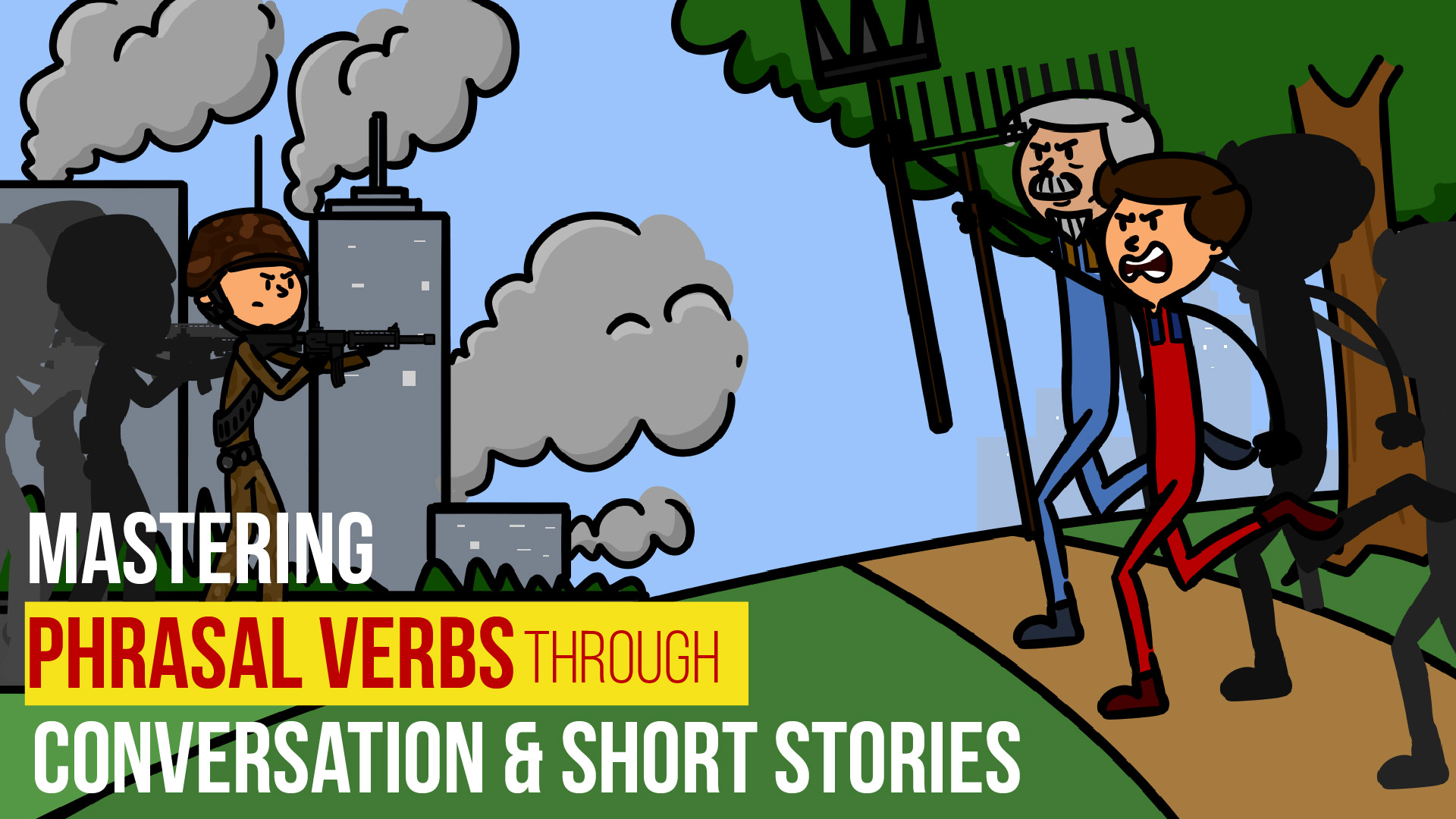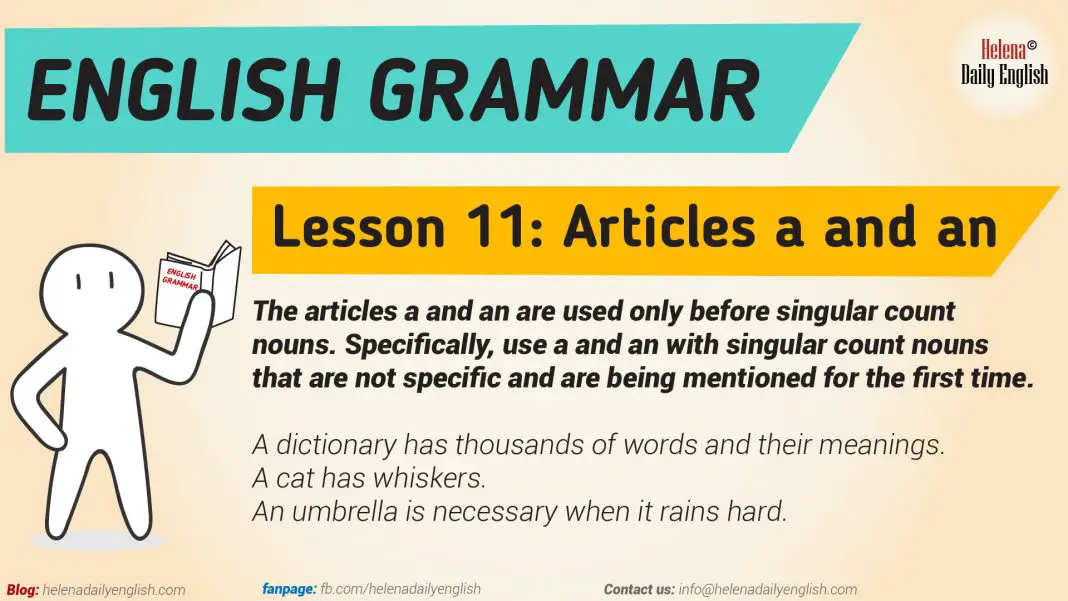Learn English Grammar: Lesson 9,10 – Noun Basics, Count Nouns
1. Noun Basics
A noun is the name of a person, place, thing, idea, or feeling.
| person: | woman | children | Dr. Smith | Mrs. Williams |
| place: | downtown | the beach | Boston | Dallas |
| thing: | a cup | a drink | Pepsi-Cola | Delta Airlines |
| idea/feeling: | honesty | friendship | happiness | anger |
2. Count Nouns
Nouns that name things you can count are called count nouns. Count nouns can be singular or plural
singular: a pencil some a quiz ten my baby one child many
plurals: pencils quizzes our babies children
2.1 Singular Count Nouns
All singular count nouns must have an article (a, an, the) or some other determiner before them.
determiner without a descriptive adjective with a descriptive adjective
articles a cat a black cat
possessive my class my worst class
demonstrative that book number that interesting book
Number one reason one specific reason
quantifier each problem each serious problem
Do not use a singular count noun without an article or other determiners:
Incorrect: black cat worst class interesting book
Correct: a black cat my worst class an interesting book
In some idiomatic expressions, no article is used:
have dinner in school on vacation at home at work by phone
2.2. Plural Count Nouns
To make a noun plural, you usually add -s.
book -> books eraser -> erasers subject -> subjects
If a noun ends in -s, -ss, -x, -ch, -sh or -z, we add -es to make the plural form.*
bus -> buses kiss -> kisses toolbox -> toolboxes
switch -> switches bush -> bushes quiz -> quizzes
*Exception: when the final -ch sounds like /k/, just add -s. stomach -> stomachs
2.3 Other Spelling Changes in Noun Plurals
Some nouns change their spelling to form the plural.
- Nouns that end in -y
When the letter before -y is a vowel (a, e, i, o, u), just add -s to form the plural.
boy -> boys day -> days bay -> bays
When the letter before -y is a consonant, change –y to -i and add -es.
baby -> babies city -> cities lady -> ladies
- Nouns that end in -f or -fe
The ending -f or -fe changes to -ves to form the plural.
shelf -> shelves knife -> knives leaf -> leaves
- Nouns that have the same form for singular and plural
1 sheep -> 2 sheep 1 deer -> 2 deer 1 fish -> 3 fish
1 series -> 2 series 1 species -> 10 species
- Nouns with consonant + -o ending
Add -es to form the plural.
hero -> heroes potato -> potatoes echo -> echoes mosquito -> mosquitoes
- Nouns that have irregular spellings for the plural form
mouse -> mice child -> children person -> people
man -> men woman -> women
goose -> geese foot -> feet tooth -> teeth





